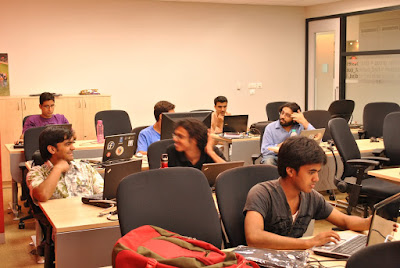I have heard a lot of people, who have just installed GNU/Linux on their systems and are new to Linux, say stuffs like, "This can do nothing, Linux is not so good". What they actually mean is, "I don't know how to configure it to do the stuffs I want". Everybody faces this problem in the very beginning of their association with Linux. This series of post will somewhat try to make their start with...
November 7, 2014
June 12, 2010
F13 Release Party, Bangalore
Although I was thinking about a release party for quite some time, but lack of a proper venue was acting as a deterrent. Thanks to Dependra Shekhawat and his colleague Saket for giving the idea about FSMK office as a possible venue. Within no time I contacted Vikram Vincent and Naveen Mudunuru and fixed up everything. Invitation mails were sent to the various mailing lists and the preparations were...
June 3, 2010
FAD Pune 2010

It all started with a discussion on having a FUDCON India this year. Someone suggested some agendas, others observed the agenda as more suited to a series of FADs, and we decided to have a FAD, off course in Pune as that would make the job of finding a venue, internet connectivity and people a piece...
December 10, 2009
CISIM09 & NABIC09

This blog is really a special one. This is an account of a lot of firt times. This was my first visit to Coimbatore, not exactly frst rather first proper visit. Last time I visitted it only for changing a bus on my way to Kodaikanal from Ooty. Also it was my first ever paper presentation in an international...
May 15, 2009
Fedora Activity Day at Dr. B.C Roy Engineering College
By Unknown
10:34 PM
bcrec, dgplug, FAD, fedora, Fedora Activity, fedora electronic lab, Fedora India, Fedora Session, fel, FOSS
1 comment
On 14th May, Thursday, a Fedora Activity Day was organized by the Durgapur Linux Users' Group (DGPLUG) at Dr. B.C Roy Engineering College, Durgapur. Though this event was in planning for a long time and was supposed to happen 1 months earlier, it had to be postponed by more than a month. But it finally materialised. Well as they say- "Better late than never".Ratnadeep contacted me long back and I...







